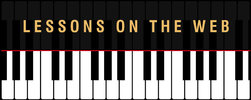|
Successfully learning a new piano peace so it is ready to be performed is a wonderful journey that will take you through a lot of different feelings and thoughts. We always start with excitement and are ready to just play it right all the way through the first time! After many years of studying, practicing and playing you will be able to do that a lot easier than right now, but for the now we’re going to learn several ways to help you get through a new piece the easiest and most correct way so you will love performing it for your friends and family. So, you have a new piece. You may or may not know what it sounds like already but either way, there’s something that you need to do before you try to start playing it. First: Analyze the piece and try to notice everything that is written on each page. Look for:
Now you’re ready to start working through the piece at your keyboard and these additional steps will get you through that process easily. Third: Start working on the individual sections that you’ve already picked out.
This video goes over all of these points and I’ll show you where you can access a free metronome online to help with your practice goals. If you like my tips and lessons, you will love the courses over on my website. Whether you are a beginner looking to get a solid foundation to build on or you are looking to take your existing skills to that next level, the online music courses on my website https://www.pianolessonsontheweb.com will help you do just that.
REQUIS
11/9/2020 11:46:53 am
Nice
Reply
bella
4/12/2024 08:52:48 am
I like it. I learn new piano pieces :)
Reply
josephine
4/12/2024 08:56:36 am
I play piano. I learned a lot and how to improve my piano skills.
Reply
Leave a Reply. |
AuthorMost blogs written by Archives
June 2020
Categories
All
|

 RSS Feed
RSS Feed